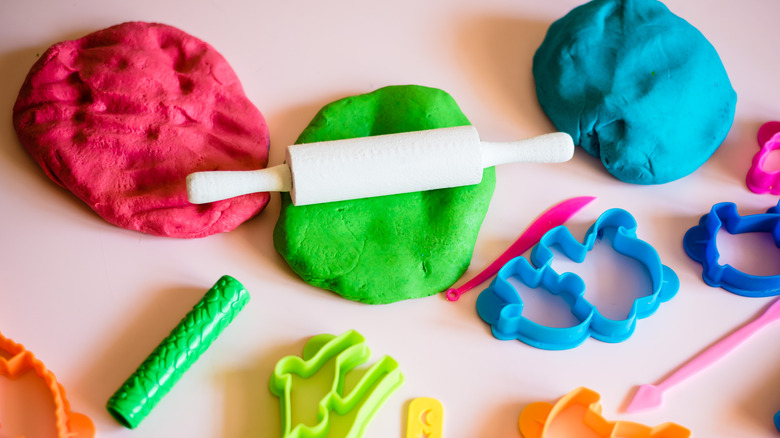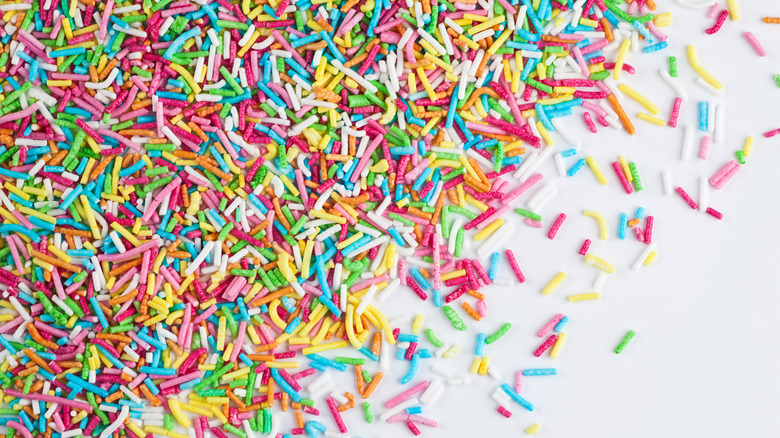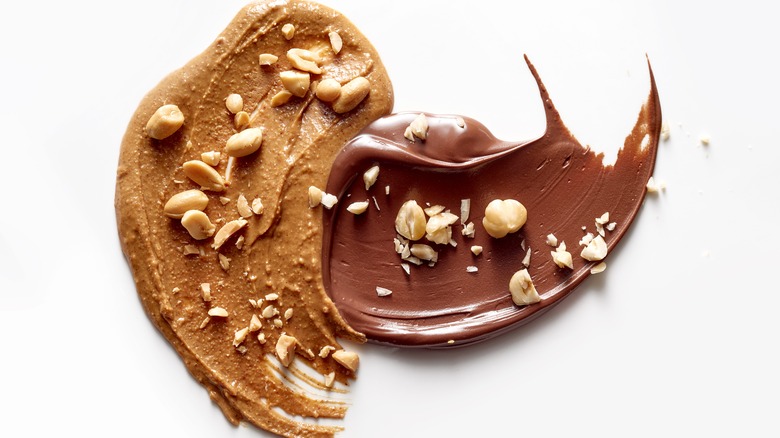The One Ingredient That Transforms Canned Frosting Into Edible Play-Doh
Both the young and the young-at-heart have options when it comes to playing with their food. Instead of making a mess with mashed potatoes or inedible, malleable raw dough, try making a Play-Doh duplicate with canned frosting. This cheap, sweet grocery item needs only a slight adjustment to firm it up.
Powdered sugar can adjust the texture and keep the product safe for raw consumption. The process is quite forgiving. The mixture will require anywhere from two to four cups of the sweet stuff, so, just like when making frosting, stay patient and mix in increments. If you find yourself with a dry ball, add a sprinkle of water to counteract the drying powder. In this way, parents can control the texture of the frosting.
Kids who love sticky slime may prefer less powdered sugar, while those eager to scoop and mold may want a very firm block of frosting to manipulate. Cooks can even make powdered sugar at home if necessary, cementing this mixture as an easy and affordable path to edible dough. Best of all, it's a blank canvas for kids to explore with all of their senses.
Customizing and enriching homemade Play-Doh
In addition to streamlining the process, canned frosting brings the added charm of a delicious smell. Kids can enjoy whiffs of vanilla, strawberry, or lemon. Alternatively, you can build your own favorite aroma using baking extracts already in your pantry, such as orange, lemon, or cherry, or even powdered drinks like Kool-Aid.
Many frosting jars also come loaded with confetti sprinkles, a satisfying textural element that can engage curious fingers and disintegrate with the right amount of pressure. Households can make adding sprinkles part of the activity, as different shapes can mimic the tactile experience of plastic beads in slime. Mini chocolate chips and Nerds can also provide a fun surprise.
As with traditional Play-Doh, doughs based on canned frosting are easy to dress up with vibrant food coloring or pigmented ingredients like cocoa powder, turmeric, and beet juice. Of course, be sure to cover your table and wash hands before and after to keep the rest of your space free of staining dyes. Then, break out ice cream scoops and cookie molds for kids to slice and dice their colorful creations.
Other pantry staples to use for edible dough
If allergies aren't a concern, you can also add peanut butter into the mix. This nutty ingredient can substitute for canned frosting, or add a welcome aroma and chunky texture when combined with other doughs. Almond butter and chocolate hazelnut spreads are pricier additions but can provide visual and textural contrasts as well. Although powdered sugar will firm the dough, giving it a quick chill as well can help solidify the fat content.
Alternatively, use marshmallows as the base, taking inspiration from marshmallow fondant. This will require more labor, as you'll need to melt the squishy pieces in the microwave with oil before mixing in powdered sugar. The sticky mixture will offer a similarly clean slate for color, sprinkles, and scents.
As for the traditional Play-Doh mix of salt, cream of tartar, and flour, we have some bad news: You should never eat raw flour. The ground wheat can contain bacteria capable of sickening kids and adults alike. Caregivers should make sure to bake the powder on a sheet tray, and then prepare the mixture on the stove for safety. And don't worry about food waste — bakers can use leftover toasted flour in their desserts for added nuttiness. There's a similar concern when it comes to large quantities of raw cornstarch, which can be similarly contaminated, so for the safest play date, only mix frosting and cornstarch for older kids who understand not to sample their artwork.



